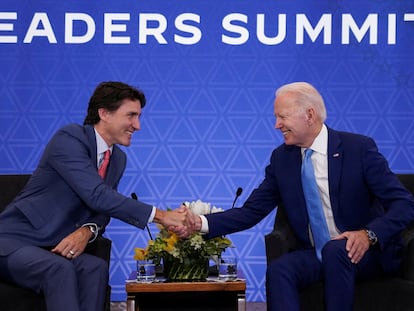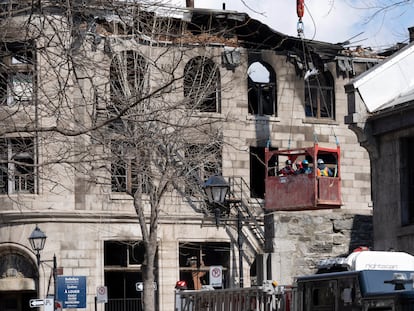Why Canada has a problem with its nurses
The country’s acclaimed public health system is at breaking point, partly due to staffing shortages caused by low salaries and long working hours


Canadians have a labor problem. There are 848,000 job vacancies, according to a recent government report. A sector particularly affected by the shortage of personnel is public healthcare and, more specifically, nursing. This is a very sensitive issue and the consequences of the worker shortage is upsetting Canadians, who are having to deal with emergency rooms closed on weekends in Winnipeg, delays in care in Montreal, or a slow ambulance system in Ottawa, to name just a few examples.
It is common practice that nurses are required to do mandatory overtime. They also have a large number of patients under their care. “Stress and anxiety are very high. We are afraid of making a mistake with the people under our care,” wrote one of these workers from British Columbia on her social media accounts. In addition, some provincial governments, which are in charge of healthcare, flatly refuse an increase in wages. In Ontario, the most heavily populated province in the country, nurses have not stopped demonstrating against a 2019 law that caps salary increases at 1% per year for public workers.
It is therefore not surprising that many nursing professionals are turning to less precarious environments such as private clinics, while others are thinking twice before joining the public system in the first place. A 2022 report by the Canadian Federation of Nurses Unions found a 219.8% increase in nursing vacancies since 2017.
Various provincial governments have launched initiatives to try to reduce the problem. Study grants and a more accentuated reconciliation between staff and hospital administrators are part of these tools. There are also programs to recruit nurses in other parts of the world, although this last measure is not without its criticism. Some experts decry that recruitment efforts in Southeast Asia and Western Africa may weaken the health systems of less developed nations.
Meeting with Trudeau
In February, provincial premiers met with Prime Minister Justin Trudeau to discuss federal transfers to the healthcare system. Currently, the provinces cover 78% of the budget and Ottawa the remaining 22%. Trudeau offered 46 billion Canadian dollars over 10 years, far short of the 28 billion dollars a year requested by the provinces. Provincial premiers, with no real room to negotiate, reluctantly agreed to the proposal. Canadian healthcare, recognized throughout the world for its public, free, and universal nature, is facing daunting challenges. The shortage of nurses is one of the most serious ones, but upgrading facilities and hiring new doctors are also urgent matters.
As if that were not enough, there is a mystery surrounding the nurse selection tests. In September 2022, only 51.4% of people taking the Quebec nursing license exam for the first time achieved a pass. In March of the same year, the pass rate was 71%, and in September 2021 it reached 81%. An investigation has been opened to find out what is happening.
Sign up for our weekly newsletter to get more English-language news coverage from EL PAÍS USA Edition
Tu suscripción se está usando en otro dispositivo
¿Quieres añadir otro usuario a tu suscripción?
Si continúas leyendo en este dispositivo, no se podrá leer en el otro.
FlechaTu suscripción se está usando en otro dispositivo y solo puedes acceder a EL PAÍS desde un dispositivo a la vez.
Si quieres compartir tu cuenta, cambia tu suscripción a la modalidad Premium, así podrás añadir otro usuario. Cada uno accederá con su propia cuenta de email, lo que os permitirá personalizar vuestra experiencia en EL PAÍS.
¿Tienes una suscripción de empresa? Accede aquí para contratar más cuentas.
En el caso de no saber quién está usando tu cuenta, te recomendamos cambiar tu contraseña aquí.
Si decides continuar compartiendo tu cuenta, este mensaje se mostrará en tu dispositivo y en el de la otra persona que está usando tu cuenta de forma indefinida, afectando a tu experiencia de lectura. Puedes consultar aquí los términos y condiciones de la suscripción digital.










































